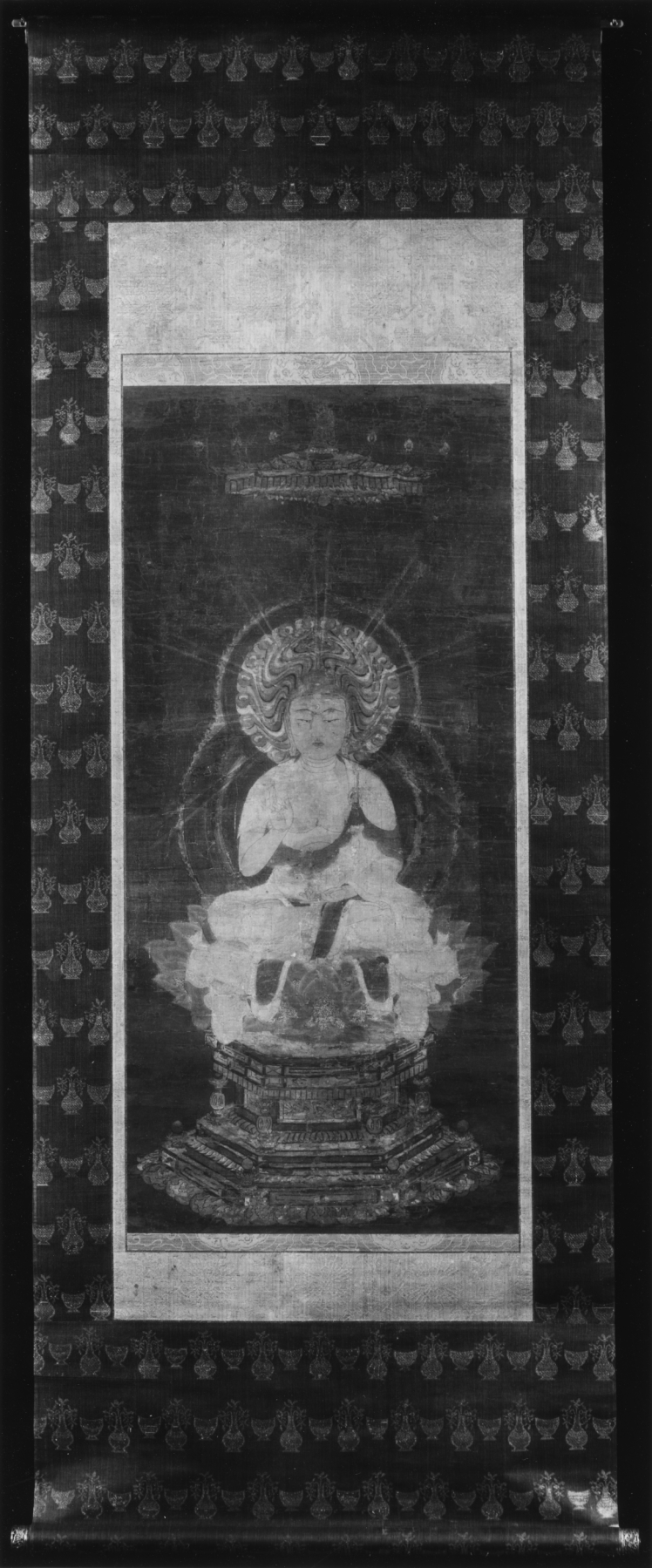Enthroned Buddha
(Japan and Korea )
Buddhism, brought to Japan from Korea, became a state religion in the 7th century. New doctrines and sects were subsequently introduced from China, and Japanese monks made their own contributions to Buddhist thought and practice. In Shingon, or "true word," Buddhism, considered an esoteric sect because its doctrines were secretly passed on from master to pupil, monks mentally enter a mandala (a circle of deities) and become each of the deities through inner concentration.
This Buddha may be the Buddha of the northern direction in the Diamond Mandala of the Shingon Buddhists, standing for nirvana and for perserverance in the conversion of all beings to the doctrine of Buddhism. It is also possible that he is Amida, the Buddha of the western paradise.
Inscription
Provenance
Provenance (from the French provenir, 'to come from/forth') is the chronology of the ownership, custody, or location of a historical object.
Yamanaka & Co., New York [date and mode of acquisition unknown]; Henry Walters, Baltimore, 1920, by purchase; Walters Art Museum, 1931, by bequest.
Conservation
| Date | Description | Narrative |
|---|---|---|
| 8/4/1991 | Treatment | cleaned; stabilized; mounted |
| 2/28/1994 | Examination | examined for condition |
| 1/8/2002 | Examination | examined for exhibition |
Geographies
Japan (Place of Origin)
Measurements
L: 34 3/4 x W: 14 13/16 in. (88.2 x 37.7 cm)
Credit Line
Acquired by Henry Walters, 1920
Location in Museum
Not on view
Accession Number
In libraries, galleries, museums, and archives, an accession number is a unique identifier assigned to each object in the collection.
In libraries, galleries, museums, and archives, an accession number is a unique identifier assigned to each object in the collection.
35.69


